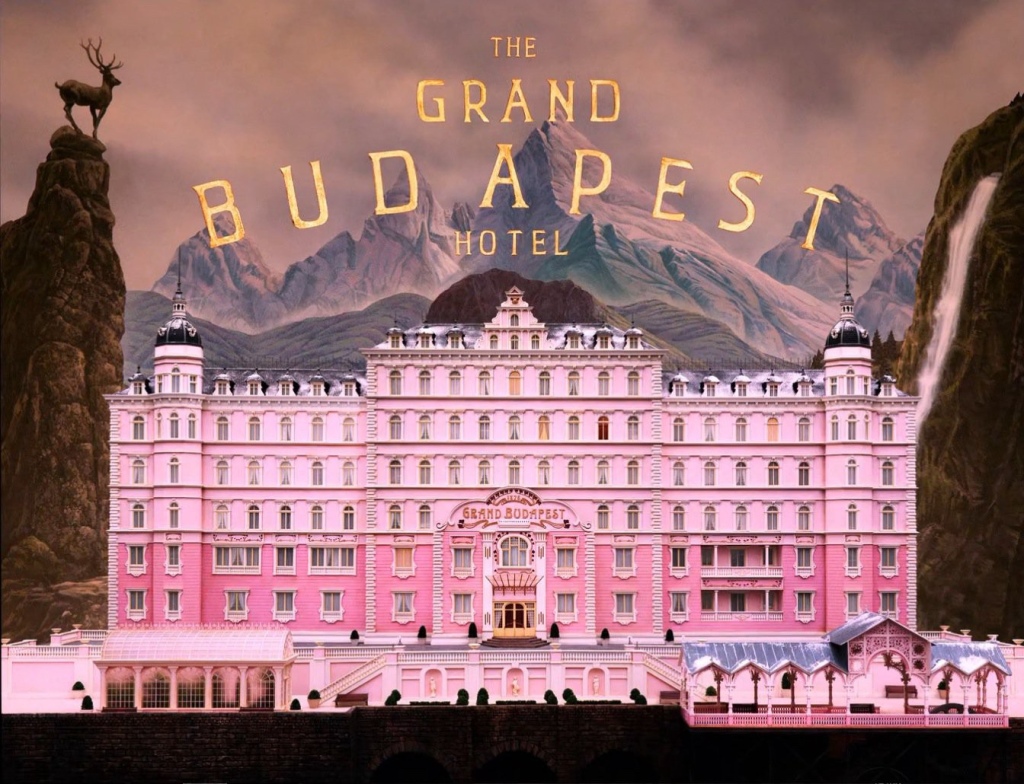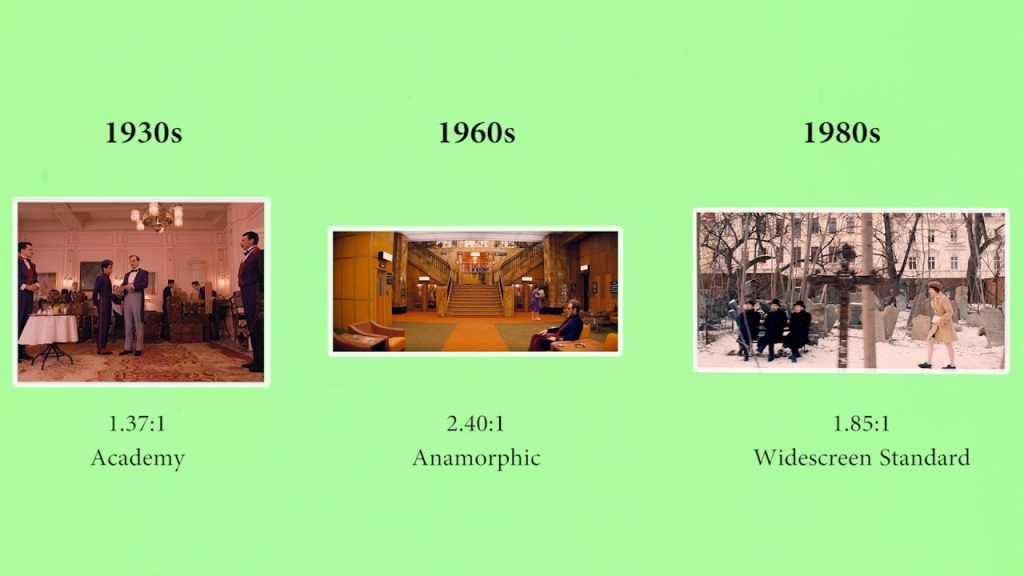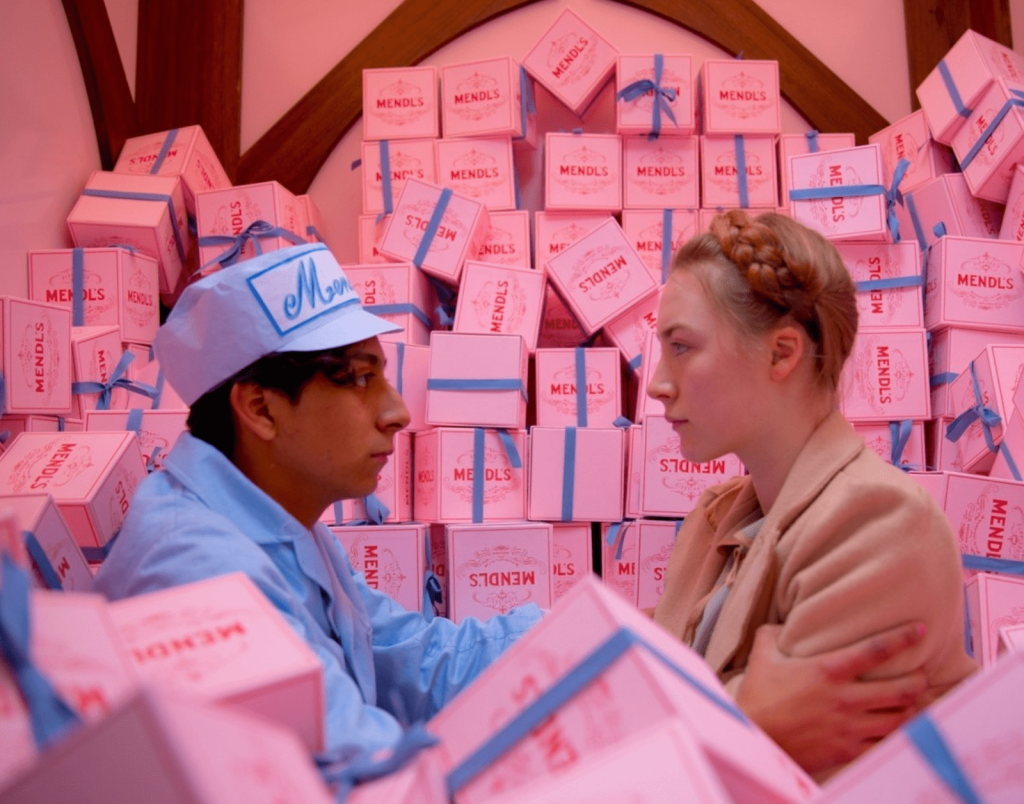The Grand Budapest Hotel (Wes Anderson, 2014) is a crime/comedy detailing the adventure of an eccentric concierge and his newly befriended lobby boy protégé. The film contains an ensemble cast containing the likes of Ralph Fiennes, Bill Murray, Edward Norton and Saoirse Ronan to name but a few.

We follow an unnamed author (Jude Law) who is interviewing Zero – the owner of the prestigious Grand Budapest. We learn the story of M. Gustave (Ralph Fiennes), the famed concierge of the hotel and a young Zero (Gustave’s newly appointed protégé) in a daring and adventurous rags to riches quest.
Wes Anderson uses many interesting techniques throughout the film. Firstly, the narrative structure of the film is nonlinear as we flick back and forth between three key time periods: 1932, 1968 and 1985. Anderson expertly makes use of three different aspect ratios for each time period in order to subtly inform the viewer when each on-screen event is taking place.

The film’s aesthetics are enchanting throughout. Anderson makes full use of the key elements of film form, predominantly the cinematography and mise-en-scène to produce a emphatic and flamboyant impact.

Being only 7 years old at the time of writing, The Grand Budapest Hotel will surely become a cult classic in the future. The filmmaking is nothing short of masterclass and each shot of the film could be a framed piece of artwork. Wes Anderson’s legacy will surely inspire aspiring auteurs to shape the future of cinema.
The film explores themes of class and wealth throughout, emphasising the occupants of the hotel as being members of upper-class society and illustrating the employees as subservient.
Personally, I thoroughly enjoyed The Grand Budapest Hotel from start to finish. Each shot was visually breathtaking and the all-star ensemble cast were a joy to witness on-screen. However, I do personally believe that the plot at some points delved into the realm of being ‘convoluted for the sake of complexity’. Additionally, in my opinion, a large part of the film’s selling point is the eclectic cast and I think it would not be as critically acclaimed without it. In saying that, I would highly recommend the film to anyone purely from the aesthetics alone.
My favourite sequence would perhaps be the fantastic ski chase scene. Anderson intelligently makes use of many filmic elements – particularly editing and special effects to construct a tense and enthralling sequence.

Overall, I would rate The Grand Budapest Hotel ★★★★.
You must be logged in to post a comment.